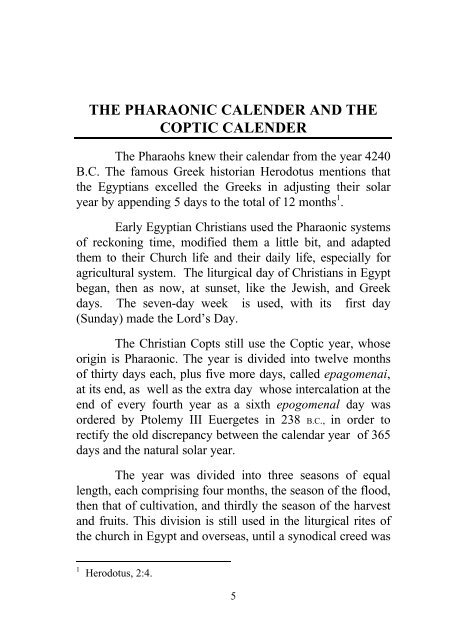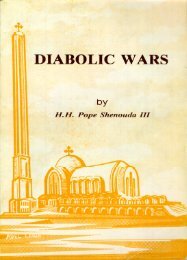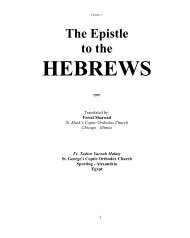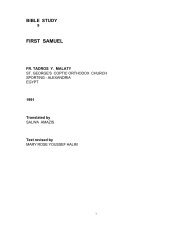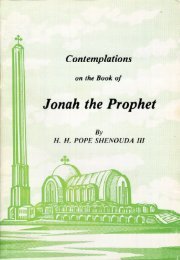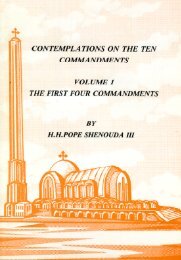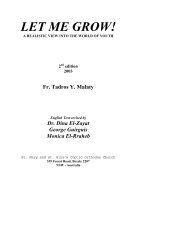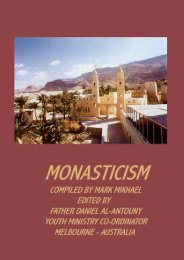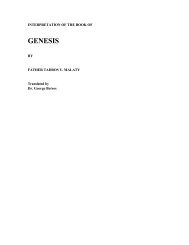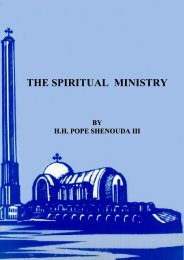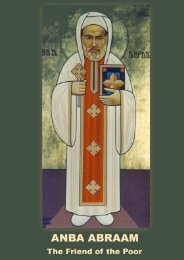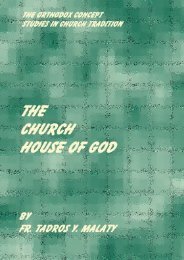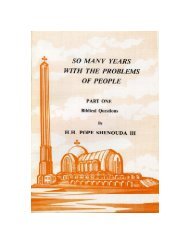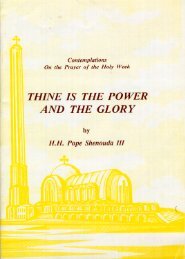The Coptic calendar and the church
The Coptic calendar and the church
The Coptic calendar and the church
Create successful ePaper yourself
Turn your PDF publications into a flip-book with our unique Google optimized e-Paper software.
THE PHARAONIC CALENDER AND THECOPTIC CALENDER<strong>The</strong> Pharaohs knew <strong>the</strong>ir <strong>calendar</strong> from <strong>the</strong> year 4240B.C. <strong>The</strong> famous Greek historian Herodotus mentions that<strong>the</strong> Egyptians excelled <strong>the</strong> Greeks in adjusting <strong>the</strong>ir solaryear by appending 5 days to <strong>the</strong> total of 12 months 1 .Early Egyptian Christians used <strong>the</strong> Pharaonic systemsof reckoning time, modified <strong>the</strong>m a little bit, <strong>and</strong> adapted<strong>the</strong>m to <strong>the</strong>ir Church life <strong>and</strong> <strong>the</strong>ir daily life, especially foragricultural system. <strong>The</strong> liturgical day of Christians in Egyptbegan, <strong>the</strong>n as now, at sunset, like <strong>the</strong> Jewish, <strong>and</strong> Greekdays. <strong>The</strong> seven-day week is used, with its first day(Sunday) made <strong>the</strong> Lord’s Day.<strong>The</strong> Christian Copts still use <strong>the</strong> <strong>Coptic</strong> year, whoseorigin is Pharaonic. <strong>The</strong> year is divided into twelve monthsof thirty days each, plus five more days, called epagomenai,at its end, as well as <strong>the</strong> extra day whose intercalation at <strong>the</strong>end of every fourth year as a sixth epogomenal day wasordered by Ptolemy III Euergetes in 238 B.C., in order torectify <strong>the</strong> old discrepancy between <strong>the</strong> <strong>calendar</strong> year of 365days <strong>and</strong> <strong>the</strong> natural solar year.<strong>The</strong> year was divided into three seasons of equallength, each comprising four months, <strong>the</strong> season of <strong>the</strong> flood,<strong>the</strong>n that of cultivation, <strong>and</strong> thirdly <strong>the</strong> season of <strong>the</strong> harvest<strong>and</strong> fruits. This division is still used in <strong>the</strong> liturgical rites of<strong>the</strong> <strong>church</strong> in Egypt <strong>and</strong> overseas, until a synodical creed was1 Herodotus, 2:4.5


